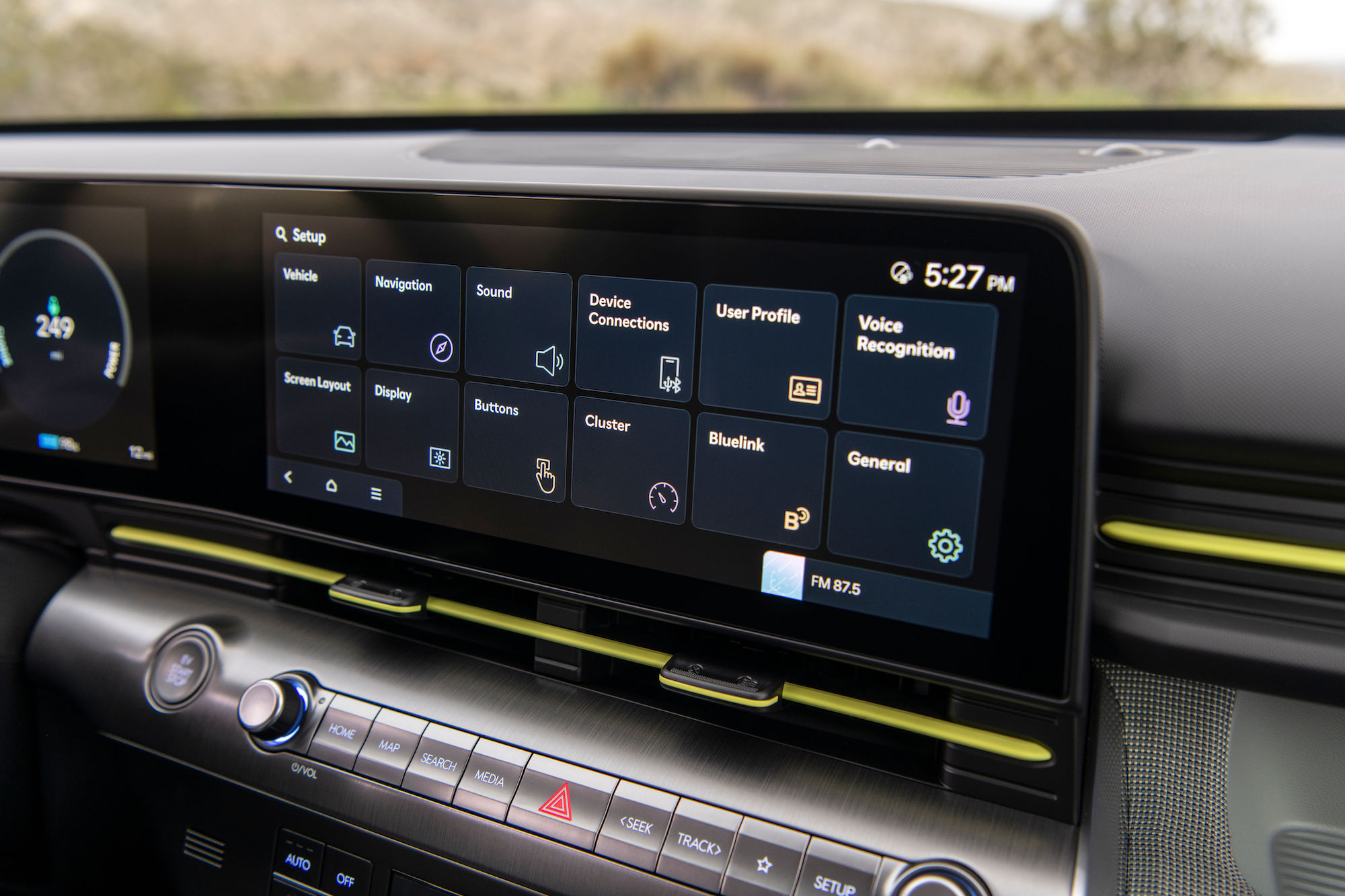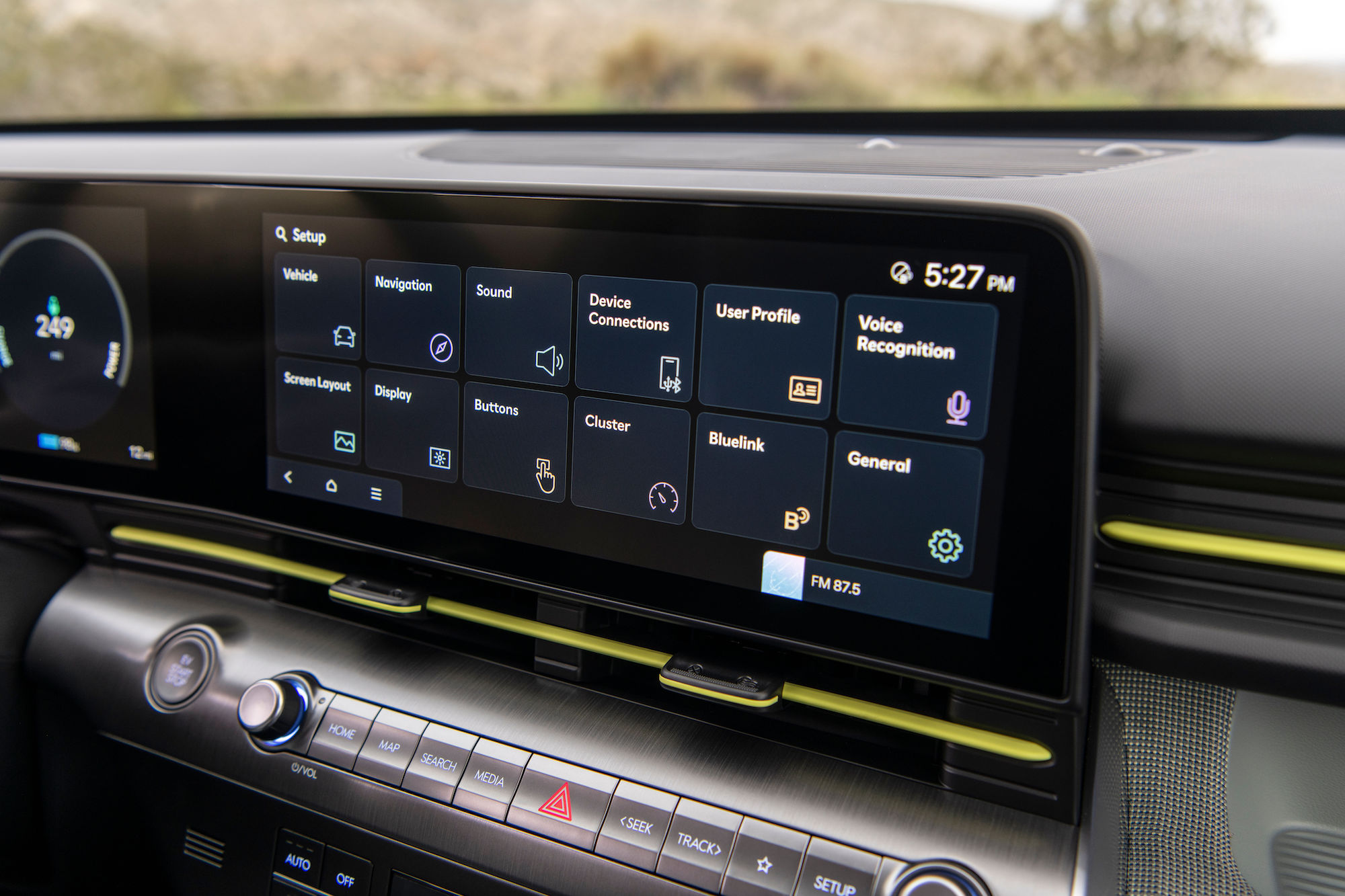
The 2024 Hyundai Kona will be one the most affordable cars with over-the-air updates
It’s no secret that Hyundai’s design department is kind of the one to beat right now. But when the redesigned 2024 Hyundai Kona goes on sale this summer, this compact crossover’s upgrades are more than just skin-deep.
The 2024 Hyundai Kona will also feature over-the-air updates — the ability to wireless transmit software updates just like a smartphone. That might not seem special in an era when Tesla adds video games and fart sound effects via OTA. Aside from those sort of gimmicks, OTA updates can be a vital way to add new features and fix bugs that replace and even surpass mechanical repairs.
OTAs are largely seen as the key to unlocking the software-focused future automakers want. So it’s notable that Hyundai has picked the humble Kona — the outgoing model started at just $22,140 — for this OTA honor, making it one of the most affordable cars on sale to offer it as a standard feature.
Ahead of the car’s North American debut at the 2023 New York International Auto Show, Hyundai officials said OTA software updates on the Kona will allow for “a convenient, upgradable experience” where owners will receive new features, firmware upgrades, maps and multimedia applications wirelessly and without having to visit a dealer. The new Kona comes in gasoline or electric forms and OTA updates will be standard for both.
The move puts Hyundai ahead of other competitors still working to roll out OTA updates across their entire lineups. The new Kona does join its corporate cousins at Kia, which debuted this feature across all of its vehicles earlier this year, but only for their infotainment systems. The Kona features updates that impact many areas of the vehicle.
While OTA updates have been a part of Tesla’s cars for many years — that’s how the electric automaker sends out new versions of Autopilot, the so-called “Full Self-Driving” system and many other new features and bug fixes — the rest of the auto industry is still catching up.
Largely, this feature has made it to luxury cars and more expensive EVs so far. BMW, Mercedes-Benz, Polestar, the electric Ford models, Rivian and some Toyota and Lexus models offer OTA updates; many others still do not. Even Volkswagen’s much-vaunted ID.4 EV sent owners to the dealer for its software update, not wirelessly.
But that’s rapidly starting to change. After years of talking about it, the auto industry is starting to make OTA updates standard across whole lineups of cars so that new software features can be rolled out on the fly. Electric vehicles will be especially dependent on this feature, as they generally require less maintenance and fewer parts than internal combustion vehicles — but may need more tweaking to better optimize their battery management, fix bugs, upgrade automated driving functions or add new features.
Hyundai Motor Group, which includes Hyundai, Kia and luxury newcomer Genesis, has said its goal is to have all of its cars capable of OTA updates by 2025. Some already are, such as the Kia lineup, the new Hyundai Ioniq 6 sedan coming out this spring and the Kia EV9 crossover, which is also making its debut in New York this week. The updated 2024 Hyundai Sonata also now offers OTA updates.
More are coming soon, and the fact that OTA updates are coming to the inexpensive Kona says a lot about how ubiquitous this technology is likely to become across the entire industry.
What we don’t know yet is the pricing for the new Kona. A Hyundai spokesperson said that information will be released closer to its release this summer. For now, we do know the crossover will come with a 1.6-liter turbocharged four-cylinder engine or a fully-electric powertrain good for a Hyundai-estimated 260 miles of range. (A hybrid version is also available in other markets, but Hyundai has not said if that will be sold in North America; its predecessor was not.) More details will be available closer to the car’s launch.


